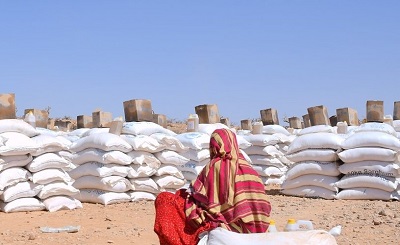Addis Ababa, (Samajweekly) More than 3.45 million people are displaced in Ethiopia, with more than half of them displaced due to conflict, according to a new report of the International Organisation for Migration (IOM), a UN agency.
The IOM, through its latest Ethiopia National Displacement Report released on Friday, said that from the total of 3.45 million internally displaced persons (IDPs) across 12 regions in Ethiopia, the main causes of displacement were conflict (accounting for 64 per cent), drought (at 17 per cent) and social tension (contributing to nine per cent), Xinhua news agency reported.
The Somali region hosts the highest number of IDPs primarily due to drought, while the Tigray region hosts the highest number of IDPs primarily displaced due to conflict, it added.
Since 2016, IOM has been monitoring the humanitarian and displacement situation through area-based assessments, which capture the numbers of displaced persons and returnees, their locations and needs, to inform the wider humanitarian and development response.
IOM data showed that an estimated 2.53 million returning IDPs were identified in more than 2,000 villages across 11 regions, in which the highest returning IDP caseloads nationwide were in the Tigray, Amhara and Afar regions.
Last week, the UN Office for the Coordination of Humanitarian Affairs (UNOCHA) warned against an impending humanitarian crisis in Ethiopia fueled by a combination of climatic shocks, conflict and economic shocks, leading to displacement in the country.
The UN agency said the East African country is once again on the verge of a major humanitarian situation due to cycles of multiple, often overlapping crises, which severely weakens communities’ ability to cope.
The humanitarian crises in Ethiopia, it said, are primarily driven by the convergence of four major factors that are climate crises mainly manifested through floods and drought, armed conflicts, disease outbreaks as well as economic shocks.
The UNOCHA said the convergence of these shocks is pushing more people into displacement, food insecurity, malnutrition, disease outbreaks and increased protection concerns amid rising global prices of essential commodities, inflation and continual devaluation of the local currency.









